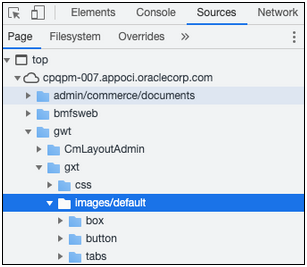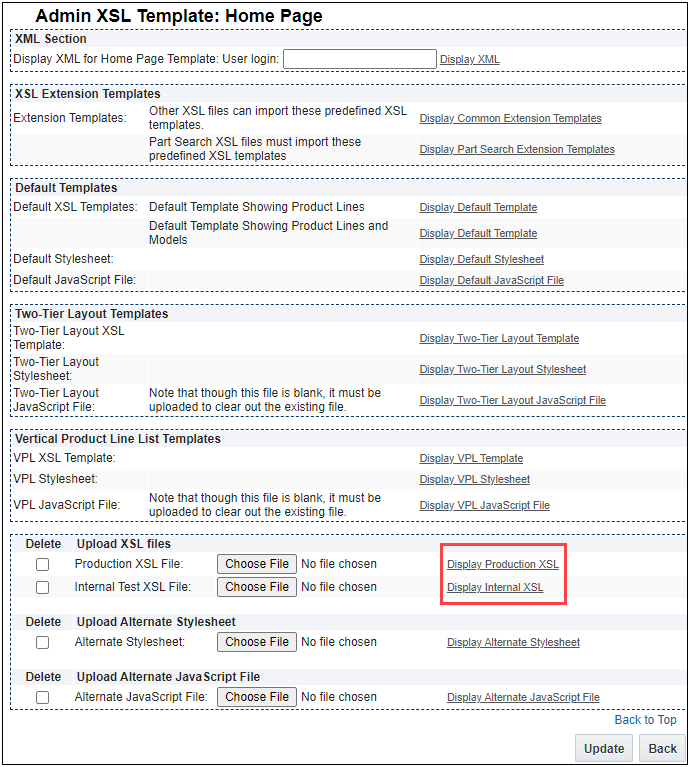Deprecation Announcements
Overview
To continually improve our application, Oracle CPQ routinely evaluates product capabilities to identify older features that should be replaced with improved functionality. Supporting outdated features adversely impacts the value that we bring to our customers. This announcement provides information to CPQ administrators and IT professionals to prepare for future updates, including the uptake of provided alternative functionality. The table below includes planned feature deprecations and their removal release schedule.
What does this mean?
“Deprecated” means the feature is planned for removal in a future Oracle CPQ Update (see End of Life column in the table below). The feature will continue to function for existing users until that time but will not be further enhanced or documented. After removal, the feature will no longer be supported or function.
| Oracle CPQ Feature | Deprecation Announced | End of Life and Removal | Description |
|---|---|---|---|
| Direct Login | 25A | Under Review |
We have announced the deprecation of the Direct Login for Oracle CPQ. If you are currently using Direct Login, we recommend administrators plan the transition to Single Sign-On (SSO). The end of life and removal of this functionality is currently under review. Direct Login is an infrequently used integration feature. This feature is enabled/disabled from the General Site Options page. This change in behavior will not affect users' ability to log into Oracle CPQ from the Oracle CPQ Login page.
|
| SOAP v1 Web Services | 25A | Under Review |
We have announced the deprecation of the SOAP v1 Web Services for Oracle CPQ. This may include Remote Web Services Single Sign-On which use SOAP v1 Login API endpoints. If you are currently using SOAP v1, we recommend administrators plan the transition to REST Web Services. The end of life and removal of this functionality is currently under review. |
Effective Feature Deprecation Notices
The following table lists feature deprecation notices taking effect in Oracle CPQ 25C or earlier.
| Oracle CPQ Feature | Deprecation Announced | End of Life and Removal | Description |
|---|---|---|---|
| Broadcast Email | 25B | 25C | The Oracle CPQ Broadcast Emails could pose a security risk therefore we have deprecated the feature. The end of life and removal of this functionality is Oracle CPQ 25C. |
| Administrator Access Permissions | 25A | 25C |
The legacy Access Permissions feature is deprecated. Access Permissions, sometimes referred to as Admin Segmentation, have been replaced by Administrator Groups. Administrator Groups were an opt-in feature is now mandatory. The end of life and removal of this functionality is Oracle CPQ 25C. |
| WebMethods Connection Method | 24B | 24D |
The WebMethods Connection Method for XML Integrations, previously known as Real-Time Integration, is deprecated. If you are currently using WebMethods Connection, you must transition to HTTP Post Connect Method. The end of life and removal of this functionality is Oracle CPQ 24D. |
| Native Lightning UI for Salesforce Connector | 23B | 24B | In Oracle CPQ 23B, we announced the deprecation of the Native Lightning UI, also known as the "Lightning Mode", in the Salesforce managed package. The end of life and removal of this functionality is Oracle CPQ 24B. |
| Legacy Global Functions | 21C | 24A |
In earlier versions of Oracle CPQ the Legacy Global Functions, also known as Jython scripts, allowed customers to write custom python scripts to use with BML for various types of processing. Due to poor performance, Oracle CPQ ended support for these scripts several years ago. If your Oracle CPQ implementation uses this functionality, we recommend administrators migrate to standard supported functionality (e.g., Util BML Libraries, Commerce BML Libraries, and BMQL). To verify if you have Legacy Global Functions enabled in your environment, follow the steps below:
|
| GXT Customer Images and CSS References | 21C | 24A |
GXT is a Java framework for building web application pages. Oracle CPQ used this framework for its internal implementation and did not expose this for customer use. We are eliminating this framework from our product. If you are referencing images or CSS provided by this framework, we strongly recommend you to remove those references from your implementation. The end of life and removal of this functionality is Oracle CPQ 24A. GXT Images/Icons References The images used by this framework is likely found under the folder path: "/gwt/gxt/images/default/" Refer to the example below. If you are referencing any image from this folder, remove those references and use the File Manager to manage your customized images.
GXT CSS References The CSS file used by this framework is likely found under this folder path: "/gwt/gxt/css/gxt-all.css". Refer to the example below. If you have customized the above CSS file or referencing any CSS classes from this file, remove those customizations and use Stylesheet Manager to manage your customized CSS.
Depending on your specific implementation, the folder structure may not be exactly in the same path as referenced above. Review the folders to find the images/default folder and gxt-all.css file.
|
| Oracle CPQ Shopping Cart | 21A | 22B |
The Oracle CPQ shopping cart feature is being deprecated from Legacy Configuration UI. Beginning in Oracle CPQ 22B, we have released the new for the Shopping Cart for the JET Configuration UI.
|
| ExtJS Library Helper | 21C | 22A |
ExtJS is a JavaScript library for building web application pages. Oracle CPQ used this framework for its internal implementation and did not expose this library for customer use. As of Oracle CPQ 22A, we are eliminating this library from our product. If you are using JavaScript for your CPQ implementation and have made any custom references to ExtJS Library functions, you must remove those references from your script. Please follow the below steps to verify the custom usage of EXTJS Library in your CPQ implementation. Step 1 To verify if you are referencing ExtJS Library in your Home XSL Template, follow the instructions below:
Step 2
Step 3
Step 4 If you have defined and referenced custom JavaScript from the File Manager, perform the document search with "Ext." to find the ExtJS references. |
| Configuration Page Templates | 21C | 21D |
This administrative feature was not widely implemented. If you are among the customers that currently have configuration page templates in your environment you need to migrate to standard configuration flows. In Oracle CPQ 21D and later, customers are no longer be able to create and edit the configuration page templates. To learn more about Configuration Flows, refer to the Configuration Flows. |
| Document Engine | 21C | 21D |
Document Engine, which is used to created proposals and submissions, is being deprecated. Customers need to recreate their existing DocEngine Templates with the Document Designer. Upon upgrade to Oracle CPQ 21D or later, customers no longer have access to Document Engine administration for the editing of templates. However, customers retain edit access to the raw XSL templates that Document Engine produced. Print actions using templates created with the Document Engine continue to function for end users. To learn more about Document Designer, refer to Document Designer Overview. |








